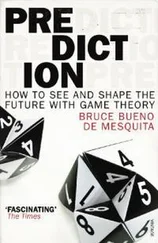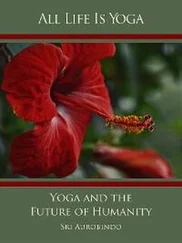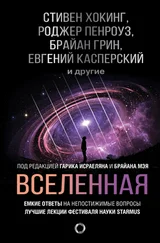The expansion of wealth and leisure—coupled with the connectivity offered by IT—will offer millions of highly educated amateurs and ‘citizen scientists’ anywhere in the world greater scope than ever before to follow their interests. Moreover, these trends will enable leading researchers to do cutting-edge work outside a traditional academic or governmental laboratory. If enough make this choice, it will erode the primacy of research universities and boost the importance of ‘independent scientists’ to the level that prevailed before the twentieth century—and perhaps enhance the flowering of genuinely original ideas.
A main theme of this book is that our future depends on making wise choices about key societal challenges: energy, health, food, robotics, environment, space, and so forth. These choices involve science. But key decisions shouldn’t be made just by scientists; they matter to us all and should be the outcome of wide public debate. For that to happen, we all need enough ‘feel’ for the key ideas of science, and enough numeracy to assess hazards, probabilities, and risks, so as not to be bamboozled by experts or credulous of populist sloganising.
Those who aspire to a more engaged democracy routinely bemoan how little the typical voter knows about the relevant issues. But ignorance isn’t peculiar to science. It’s equally sad if citizens don’t know their nation’s history, can’t speak a second language, and can’t find North Korea or Syria on a map—and many can’t. (In one survey, only a third of Americans could find Britain!) This is an indictment of our education system and culture in general—I don’t think scientists have a special reason to moan. Indeed, I’m gratified and surprised that so many people are interested in dinosaurs, Saturn’s moons, and the Higgs boson—all blazingly irrelevant to our day-to-day lives—and that these topics feature so frequently in the popular media.
Moreover, quite apart from their practical use, these ideas should be part of our common culture. More than that, science is the one culture that’s truly global: protons, proteins, and Pythagoras are the same from China to Peru. Science should transcend all barriers of nationality. And it should straddle all faiths too. It’s an intellectual deprivation not to understand our natural environment and the principles that govern the biosphere and climate. And to be blind to the marvellous vision offered by Darwinism and modern cosmology—the chain of emergent complexity leading from a ‘big bang’ to stars, planets, biospheres, and human brains—rendering the cosmos aware of itself. These ‘laws’ or patterns are the great triumphs of science. To discover them required dedicated talent—even genius. And great inventions require equivalent talent. But to grasp the key ideas isn’t so difficult. Most of us appreciate music even if we can’t compose it, or even perform it. Likewise, the key ideas of science can be accessed and enjoyed by almost everyone—if conveyed using nontechnical words and simple images. The technicalities may be daunting, but they can be left to the specialists.
Advances in technology have led to a world where most people enjoy a safer, longer, and more satisfying life than previous generations, and these positive trends could continue. On the other hand, environmental degradation, unchecked climate change, and unintended downsides of advanced technology are collaterals of these advances. A world with a higher population more demanding of energy and resources, and more empowered by technology, could trigger serious, even catastrophic, setbacks to our society.
The public is still in denial about two kinds of threats: harm that we’re causing collectively to the biosphere, and threats that stem from the greater vulnerability of our interconnected world to error or terror induced by individuals or small groups. Moreover, what’s new in this century is that a catastrophe will resonate globally. In his book Collapse , [6]Jared Diamond describes how and why five different societies have decayed or encountered catastrophes and gives contrasting prognoses for some modern societies. But these events weren’t global; for instance, the Black Death didn’t reach Australia. But in our networked world, there would be nowhere to hide from the consequences of economic collapse, a pandemic, or a collapse in global food supplies. And there are other global threats; for instance, intense fires after a nuclear exchange could create a persistent ‘nuclear winter’—preventing, in worst-case scenarios, the growing of conventional crops for several years (as could also happen after an asteroid impact or a super-volcano eruption).
In such a predicament it is collective intelligence that would be crucial. No single person fully understands the smartphone—a synthesis of several technologies. Indeed, if we were stranded after an ‘apocalypse’, as in extreme survival movies, even the basic technologies of the iron age and agriculture would be beyond almost all of us. That’s why, incidentally, James Lovelock—the polymath who introduced the Gaia hypothesis (the self-regulating planetary ecology)—has urged that ‘handbooks for survival’, codifying basic technology, should be prepared, widely dispersed, and securely stored. This challenge has been taken up, for instance, by the UK astronomer Lewis Dartnell in his excellent book The Knowledge: How to Rebuild Our World from Scratch . [7]
More should be done to assess, and then minimise, the probability of global hazards. We live under their shadow, and they are raising the stakes for humanity. The emergent threat from technically empowered mavericks is growing. The issues impel us to plan internationally (for instance, whether or not a pandemic gets global grip may hinge on how quickly a Vietnamese poultry farmer can report any strange sickness). And many of the challenges—for instance, planning how to meet the world’s energy needs while avoiding dangerous climate change, and ensuring food-source security for nine billion people without jeopardising a sustainable environment—involve multidecade timescales that are plainly far outside the ‘comfort zone’ of most politicians. There’s an institutional failure to plan long-term and to plan globally.
There’s no denying that futuristic technologies, if misapplied, could lead to hazards, even catastrophes. It is important to take advantage of the best expertise to assess which risks are credible, and which can be dismissed as science fiction, and to focus precautionary measures on the former. How can this be done? It’s not feasible to control the rate of advance, still less to relinquish potentially hazardous developments completely, unless a single organisation holds the purse strings—and that’s completely unrealistic in a globalised world with a mix of commercial, philanthropic, and governmental funding. But even if regulations can’t be anywhere near 100 percent effective—and can provide little more than a ‘nudge’—it’s important for the scientific community to do all it can to promote ‘responsible innovation’. In particular, it may be crucial to influence the order in which various innovations come to fruition. For instance, if a superpowerful AI ‘went rogue’, it would then be too late to control other developments; on the other hand, an AI firmly under human control, but highly accomplished, could aid in reducing the risk from biotech or nanotechnology.
Nations may need to give up more sovereignty to new global organisations along the lines of the International Atomic Energy Agency, the World Health Organization, and so on. There are already international bodies that regulate air travel, radio frequency allocations, and such. And there are protocols such as the post-Paris climate change agreement. More such bodies may be needed, for planning energy generation, to ensure sharing of water resources, and for responsible exploitation of AI and of space technology. National boundaries are now being eroded, not least by the quasi-monopolies like Google and Facebook. The new organisations must retain accountability to governments but will need to use social media—as they are now and will be in future decades—and involve the public. Social media engage huge numbers in campaigns, but the barrier to their engagement is so low that most lack the commitment of participants in mass movements in the past. Moreover, the media make it easy to engineer a protest, as well as amplifying all dissident minorities—adding to the challenge of governance.
Читать дальше
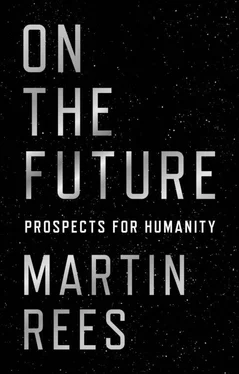
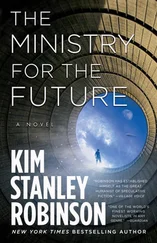
![Мартин Рис - Всего шесть чисел. Главные силы, формирующие Вселенную [litres]](/books/414169/martin-ris-vsego-shest-chisel-glavnye-sily-formir-thumb.webp)
